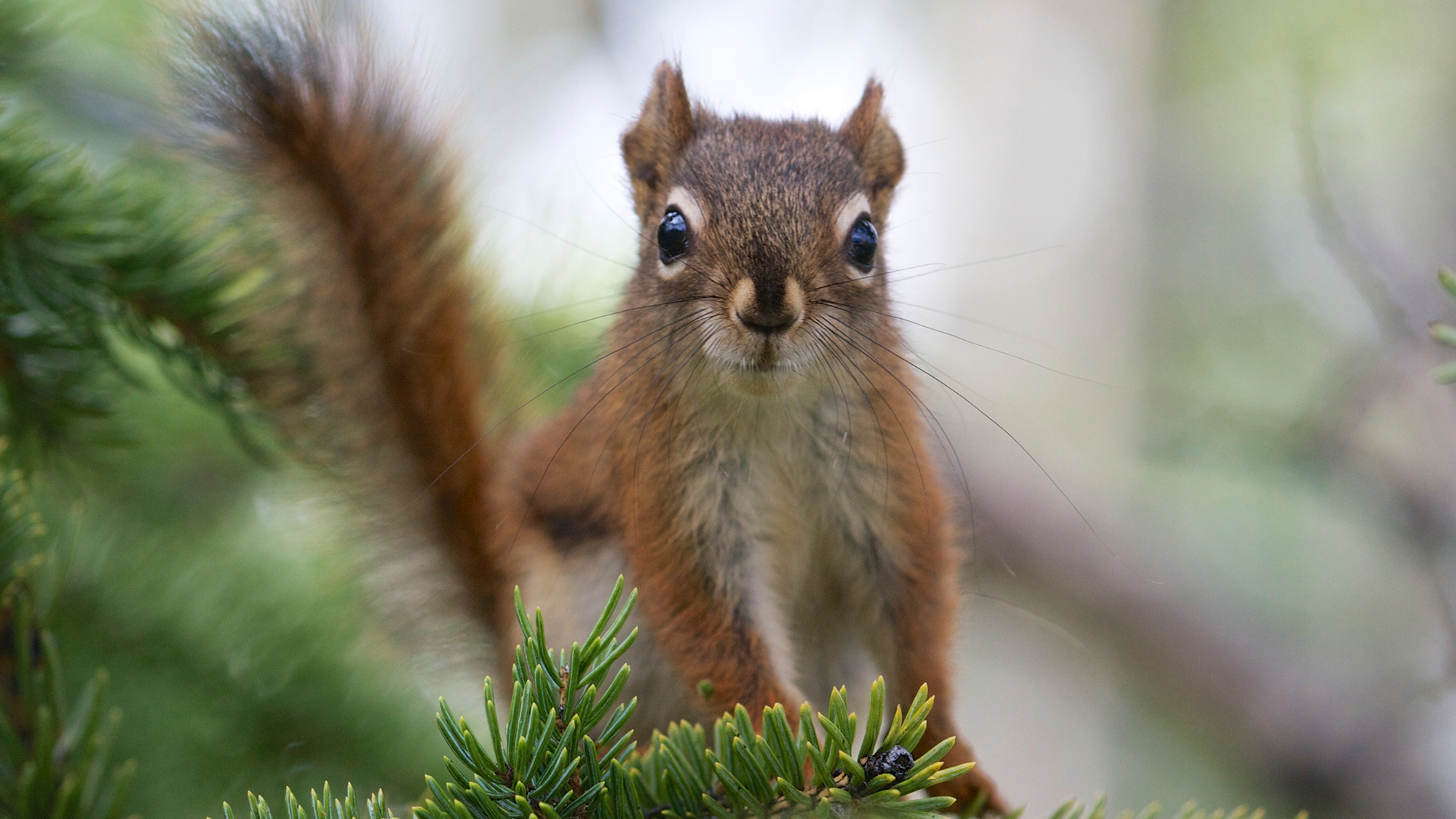

For tiny North American red squirrels, jumping from treetop to treetop is not the only daring feat that these little rodents take. The little creatures also take big reproductive risks that might lead to some big rewards when it comes to genetic fitness. It’s all a game of how well they can pass along their genes to the next generation.
A study published January 19 in the journal Science found that the red squirrels that gambled more at the game of reproduction outperformed their more cautious cousins, even if there were higher costs in the short term. The bet? That the coming spring will bear a beavy of seeds, and having loads of offspring won’t be a burden since there is plenty to go around.
[Related: Scientists confirm that squirrels are amazing gymnasts.]
It is a bit like knowing what winning lottery numbers will be, but having no idea when they will be called. While spending money on lottery tickets with those numbers may cost money in the short term, the payoff will be bigger down the road when you win the jackpot. According to study co-author and University of Michigan biopsychology research fellow Lauren Petrullo, natural selection favors the female squirrels that have large litters in the years when there is a lot of food to go around.
“We were surprised to find that some females have large litters in years when there won’t be enough food for their babies to survive the winter,” Petrullo said in a statement. “Because it’s biologically expensive to produce offspring, we wanted to know why these females make what appears to be an error in their reproductive strategy.”
The study looked at red squirrels living in the Canadian Yukon during a mast year. These are booms in a main food source every four to seven years. For the squirrels, this buffet comes in the form of seeds from the cones of white spruce trees. The squirrels can guess if it’s going to be a mast year before it occurs and increase their litter size and reproductive efforts in the months before, so that there is a better future for their babies to survive and better genetic fitness for themselves.

“There is a constant tug-of-war between the trees and the squirrels at our study sites with each player trying to deceive the other for its own fitness gain,” Petrullo said.
The study used data from Kluane Red Squirrel Project, a collaborative, 34-year-old field study involving the University of Michigan, the University of Colorado, the University of Alberta, and the University of Saskatchewan. They looked at 1,000 female squirrels from the project, collecting data on litter sizes and how many spruce cones the squirrels eat.
“Each year, we collect data on how many babies squirrels produce and how many spruce cones the squirrels eat,” said Ben Dantzer, a co-author and University of Michigan associate professor of psychology and of ecology and evolutionary biology, in a statement.
The team looked at the reproduction of the female squirrels during both food booms and busts and found differences in their genetic fitness whether or not they gambled with their reproductive strategy.
Some played it safe by keeping litter sizes small during more lean years, while others took a more optimistic approach and had large litters even during more scarce food years. The more “glass half full” squirrels had greater lifetime fitness if they got to experience a mast year, the research showed.
However, it still proved to be a gamble the squirrels aren’t guaranteed to eventually win.
“In some ways, this strategy of gambling with litter sizes is like playing with fire,” Petrullo said. “Because the average squirrel lifespan is 3.5 years and masts only happen every four to seven, a female could potentially be sabotaging her fitness by having too many babies in low-food years, hoping for a mast when she may die before she ever gets to experience a mast at all. This could be pretty costly.”
Not gambling in the reproductive game at all doesn’t appear to be a viable option for the squirrels. If they miss their shot at the jackpot, those that didn’t play might pay a high cost.
“It’s essentially impossible for a female to recuperate the fitness costs of not ramping up reproduction in a mast year, so the stakes are extremely high,” Petrullo said.
According to the team, the best bet is for the squirrels to take their chances and suffer short-term fitness costs to avoid the huge cost of completely missing the genetic fitness jackpot.
[Related: Why counting Central Park’s squirrels isn’t nuts.]
It still is not clear how squirrels can forecast future food production in their environments. According to Dantzer, it may be that they are eating parts of the spruces that affect their physiology and change the number of offspring they produce.
“This is exciting because it suggests that squirrels are eavesdropping on the trees, but we still have much more to do to solve this puzzle,” Dantzer said.
Other animals such as some migratory songbirds also use cues about the amount of food in their environment to make reproductive choices. Climate change is causing a decline in the reliability of these cues and scientists are unsure how the costs of these types of errors will change what is the best reproductive strategy for the squirrels
“If the predictability of a food boom is reduced and squirrels can no longer forecast the future, this could impact the number of squirrels out there in the Boreal forest,” Dantzer said. “This could be problematic given that squirrels are prey for many predators.”
